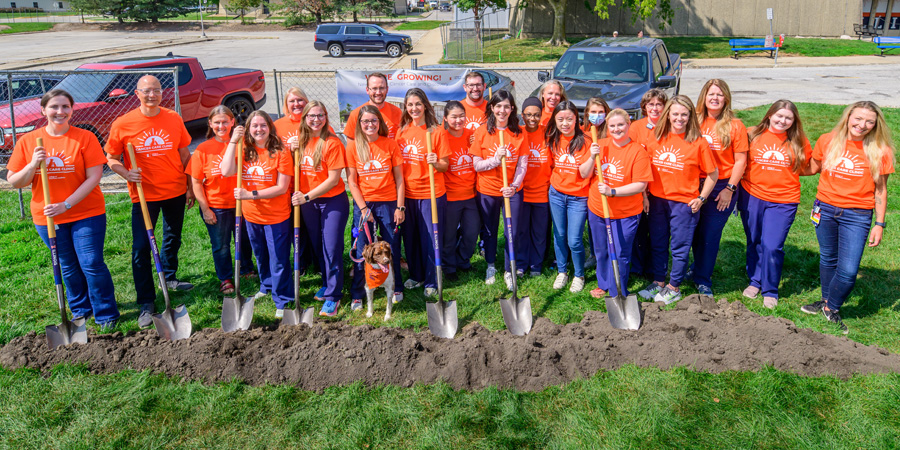I-TICK Program Seeks 1,000 Samples
Tickborne diseases are on the rise across the nation. Since 1990, Illinois has seen a tenfold increase in the number of reported human cases of tickborne diseases, which include Lyme disease, Rocky Mountain spotted fever, and a dozen more. As the 2018 tick season gets under way, researchers at the University of Illinois are launching a surveillance program to learn more about where and when Illinoisans are encountering ticks.
“The goal of the program is to gather information about the presence of ticks of public health concern in Illinois,” said Dr. Lee Ann Lyons, a pathobiology graduate student who earned her veterinary degree at the College of Veterinary Medicine in 2008. (Dr. Lyons appears in the photo above assembling tick collection kits to be used.) She, along with Illinois Natural History Survey research assistant Beth Gilliam, are coordinating the tick surveillance program, which is called Illinois Tick Inventory Collaboration Network (I-TICK).
“By knowing more about the timing and location of ticks, public health personnel can better inform the public about tick prevention strategies and provide information that guides efforts to reduce the number of ticks,” said Dr. Marilyn O’Hara Ruiz. She and Dr. Nohra Mateus-Pinilla, with the Illinois Natural History Survey/Prairie Research Institute, developed the I-TICK program.
The I-TICK program will engage Illinois citizens across the state. By mid March, the program had identified 18 locations throughout Illinois that would serve as distribution hubs for tick collection kits created by the program. The hubs will work with their local stakeholders to organize the tick collections in their area. The hubs will be the point of contact for program participants; hubs will return the completed kits to the university.
[row][column size=”6″]
Ideal participants are people who work outside on a regular basis, including employees in park districts, forest preserves, mosquito abatement agencies, and public health departments as well as master gardeners and master naturalists in these University of Illinois Extension programs. Participants will collect ticks found on themselves and record other data for five days within a two-week timeframe.
[/column][column size=”6″]
[callout title=”How to Join the I-TICK Program”]
Individuals are welcome to participate in the I-TICK program through their nearest hub. Organizations interested in serving as a hub for the program, especially in west-central Illinois, are encouraged to contact the I-TICK coordinators by email: Lee Ann Lyons, leelyons@illinois.edu; Beth Gilliam, beths77@illinois.edu.
[/callout]
[/column][/row]
Researchers at the University of Illinois will identify the species of ticks submitted through the program and analyze the data to get a clearer picture of when and where ticks that carry disease are most prevalent. In Illinois, there are four species of tick that are known to pose a public health threat. A subset of collected specimens will also be tested for pathogens. The data amassed will be used to inform public health policy in Illinois.
The I-TICK program is funded through the Upper Midwest Center of Excellence in Vector-Borne Disease, a consortium of Midwestern universities established last year by the Centers for Disease Control and Prevention and headquartered at the University of Wisconsin, Madison. Dr. Marilyn O’Hara Ruiz at the College of Veterinary Medicine leads the University of Illinois component of this center. The tick surveillance program is one example of the center’s efforts to improve predictions of disease emergence and outbreaks and to optimize surveillance networks and pathogen detection.
According to Dr. Lyons, the program hopes to receive 1,000 completed tick collection kits in 2018. The surveillance program will continue for the next few years with funding from the Midwest Center. Leaders hope to identify funding within the state to continue building data about tickborne disease and its impact on Illinois health.

![[lee ann lyons-illinois vetereinary medicine]](https://vetmed.illinois.edu/wp-content/uploads/2021/04/news-ITICK.jpg)


